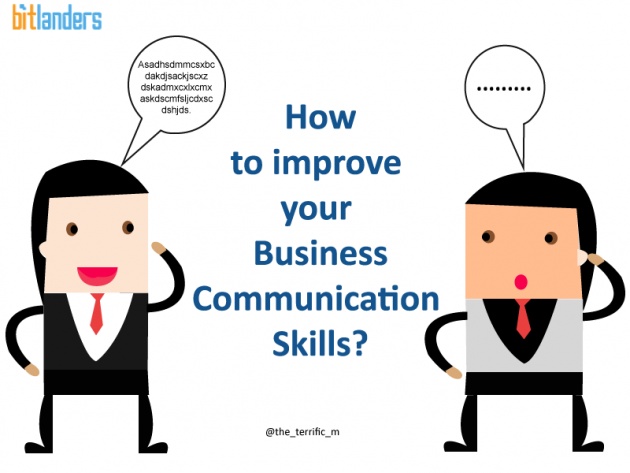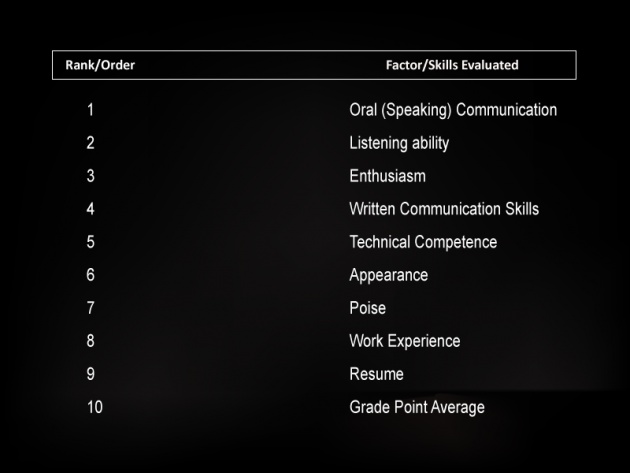
Image credits: Designed by me.
What’s the hardest thing in the business World? Probably to sell something? I am sure you’ve gone from a phase at least once in your life, where you had to sell something that you are using and obviously that requires some communication skills. Because with good communication skills, you are able to sell an ordinary or average thing, whereas, sometimes a marvellous product goes unsold and got less audience due to bad communication skills. This shows that communication is a necessary part of our life, no matter in what field you are working, no matter how much you know about your job, specialized knowledge isn’t enough to guarantee success.

Image credits: google.com
It is a fact that the need for face-to-face communication may seem less important in today’s high-tech world. But in the opposite, you can’t deny the fact that somehow Communication still plays a vital role in your progress. To highlight the importance of communication and to improve the communication skills, I’ve collected and discovered some certain basic facts and tips, gathered in this blog which will definitely help us throughout to improve our communication skills. So let’s start with the basic:
What Is A Communication?
Communication is the way of sending and receiving messages. However, communication can be effective only when the message is understood and when it stimulates action or encourages the receiver to think in new ways.

Image credits: google.com
Importance Of Communication
Video Credits: youtube.com
The Importance of Communication.
We all communicates daily in our life, so we cannot live without communication. Your ability to communicate effectively increases productivity of both, your’s and your organization. With good communication skills, you can anticipate problems, make decisions, coordinate workflow, supervise others, develop relationships, and promote products and services. You can create the impressions you and your company make on colleagues, employees, investors, and customers in addition to perceiving and responding to the needs of these stakeholders (the various group you interact with).
![]()
Image credits: google.com
On the other hand, without effective communication, people will find it hard to understand your message, misunderstand each other and misinterpret information. Sometimes ideas get misfire or fail to get attention and people and companies flounder.

Image credits: google.com
Researches On Why Communication Is So Important!
Video credits: youtube.com
Video on why Communication is so important.
“A studies show that on average, 14 percent of each 40-hour work-week is wasted because of poor communication between staff and the management.”
Remember, the above matter is subjected to an effective communication. No matter how much work experience you got, how much you have specialized knowledge, these alone aren’t enough to guarantee success, communication skills are also vital.

Image credits: Designed by me
In the above picture, those are the 10 most required skills according to a study.
- Subscribers to the Harvard Business review rate “A person’s ability to communicate” is the most important factor in making an executive corporate person, more important than ambition, education, and capacity of hard work.
- In another research, a twenty-year study that followed the progress of Stanford University M.B.A.s showed that the most successful graduates (as measured by both career advancement and salary) shared that the most successful person are those who are distinguish good communicators: with a desire to persuade, an interest in talking and working with other people.
- Business consultant Susan Peterson explains how communication can help workers in today’s high-tech World.
- “We have information faster than we ever dreamed, but what’s happening to our quality of communication? As managers, business-persons, our responsibility is to manage information for which communication is necessary”.
- In a study of the help-wanted sections of 160 Sunday newspapers, nearly 6,300 classifieds ads specifically asked for applicants with good communication skills.
Forms of Communication:
Non-Verbal Communication:
The most basic form of communication is nonverbal communication: all the cues, gestures, facial expressions, and attitude toward time that enable people to communicate without words. Anthropologists theorize that long before our ancestors communicates with another by using their bodies. They gritted their teeth to show their anger; they smiled and touched one another to indicate affection. Although we have come a long way in those primitive times, the fact is we still use nonverbal cues to express our superiority, dislike, love and other feelings.

Image credits: google.com
Forms of Non-verbal Communication.
Verbal Communication:
Although we can express many things nonverbally, but yet there are limits to what we can communicate without the help of the language. For example; if you want to discuss past events or abstractions, you need symbols that stand for your thoughts. Verbal communication consists of words arranged in meaningful patterns. For an instance, the English language currently contains about 750,000 words, although most people in the United States recognize only about 20,000 of them.

Image credits: google.com
How to make your Business communication effective?
Your effective business communication will be your actual strength. Describing above the advantages of a Business effective communication, effective messages considers a number of common characteristics. See how they could be persuaded in Business messages:
Image credits: google.com
The 7 C's of Business Communication which are also described below.
-
Completeness:
Business messages usually describe how to do something, explain why a procedure was changed, highlight the cause of a problem and a possible solution, discuss the status of a project, or explain why a new piece of equipment should be purchased.
-
Concreteness:
Business message use concrete language and specific details. Information must be clear, convincing, accurate, and ethical. You must present hard evidence (not just opinion) and present all sides of argument before you commit to a conclusion.
-
Conciseness:
Your business messages are directed to a specific audience. Therefore, you must be clearly state what is expected of, or what you can do for, that particular audience. -
Consideration:
The Business Messages often consists employers, or clients to purchase a product or service or adopt a plan of action. To be effective, business messages must show readers just how a product, service, or idea will benefit them specifically. -
Courtesy:
For an effective business message, one should be very sincere, tactful, thoughtful and appreciative towards the customer and refrain yourself from the expressions that hurt, irritate, or insult. -
Clarity and condense:
Your business messages frequently use tables, charts, photos, or diagrams to clarify or condense information or emphasize important information. -
Clarity:
Communicator should always remain point to point of reader is the purpose of clarity. Of course you know it is not simple. We all carry around our own unique interpretations, ideas, experiences associated with words.
In order to make your communication effective, one must acknowledge these 7 C’s of communication, otherwise your communication will be less or non-effective.
How to write Positive Business Messages?
Step 1: Plan Your Message
“Even simple messages can benefit from thoughtful planning.”
Planning is very essential for writing Positive Business message. Even though planning routine and positive messages may take only a few minutes, the four tasks of planning still apply. First, analyze the situation, making sure that your purpose is clear and that you know enough about your audience. Second, gather whatever information your audience needs to know. Third, select the right medium for the message and the audience. Both routine and positive messages are often sent via email or instant messaging today, but printed memos, letters, and other media are used in some instances. Fourth, organize your information effectively. This task includes defining your main idea, limiting your scope, selecting a direct or an indirect approach, and outlining your content.
Step 2: Write Your Message
Start by adapting your approach to your audience. Be conscious to your audience by maintaining directly a “you” attitude and by remaining polite, emphasizing the positive and using bias-free language. You’ll want to use plain English and make your writing as active as possible.
Step 3: Complete Your Message
No matter how brief or straightforward your message, maximize its impact by giving yourself plenty of time to revise, produce, proofread, and distribute it. First, revise your message by evaluating content and organization to make sure you’ve said. Review your message’s readability. Edit and rewrite to make it concise and clear. Second, design your document to suit your purpose and your audience. Even simple e-mails and instant messages can benefit from careful font selection, the wise use of whitespace, and other design choices. Next, proofread the final version of your message, looking for typos, errors in spelling and mechanics, alignment problems, poor print quality, and so on. Finally, choose a distribution method that balances cost, convenience, time, security, and
privacy.
How to write Negative Business Messages?
Using the three-step writing process for negative messages…
Step 1: Plan Your Message
When planning the message, don’t forget the fact that your audience doesn’t want to hear what you have to say. To control the damage, and to encourage the acceptance of your message, analyze the situation carefully to better understand the context in which the recipient will process your message.
Step 2: Write Your Message
When you are adapting a negative message to your audience, pay close attention to both effectiveness and diplomacy. After all, your audience does not want to hear what you have to say and might disagree strongly with you, so messages perceived to be unclear or unkind will amplify the audience’s stress. Be sure to maintain a “you” attitude, strive for polite language that emphasizes the positive whenever appropriate, and make sure your word choice is without bias.
Step 3: Complete Your Message
Your need for careful attention to detail continues as you complete your message. Revise your content to make sure everything is clear, complete, and concise,bearing in mind that even small flaws are magnified as readers react to your negative news. Produce clean, professional documents; and proofread carefully to eliminate mistakes. Finally, be especially sure that your negative messages are delivered promptly and successfully; waiting for bad news is hard enough without wondering whether a message was lost.
The above are the tips, by following you can even make your little communication very effective and easily achieved your goals through your words. I hope this blog will help us in unleashing our communication skills to talk according to our expectation in less time.
That’s all from my side, I hope you had an amazing experience reading this blog. Thank you, Peace!




